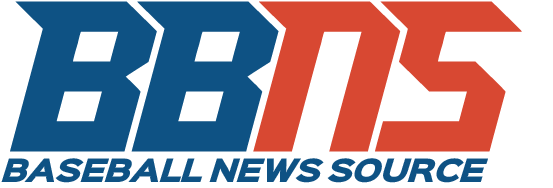 The immediate futures of each team in the National League East are all different and distinct. Had the Washington Nationals played to potential in the first half of the season and the Philadelphia Phillies recovered from an awful first half of 2012, things might have been different.
The immediate futures of each team in the National League East are all different and distinct. Had the Washington Nationals played to potential in the first half of the season and the Philadelphia Phillies recovered from an awful first half of 2012, things might have been different.
The East had a chance to have three super competitive teams and potentially the top two teams in the NL, but instead the Braves appear to be a runaway candidate, 6.5 games ahead of the barely .500 Washington Nationals. Of course, even Atlanta started 12-1 only to play just three games above .500 since.
So in a sense, the division has underachieved enormously this year, but all five franchises seem to have a plan in mind. The trade deadline is the first checkpoint for any team with a specific strategy and this is what you could expect from each team in the National League East.

[divide]
Buyers: Atlanta Braves
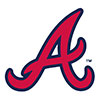 Pat yourself on the back if you thought what was supposed to be one of the greatest outfields in modern MLB history would have combined for the following roughly halfway through the season: 737AB, .218 BA, 29HR, 73RBI and 221K. This was a lineup where some were talking about over 100 home runs, 75SB and 300 RBI.
Pat yourself on the back if you thought what was supposed to be one of the greatest outfields in modern MLB history would have combined for the following roughly halfway through the season: 737AB, .218 BA, 29HR, 73RBI and 221K. This was a lineup where some were talking about over 100 home runs, 75SB and 300 RBI.
Instead, Jason Heyward missed much of the season with injuries and ineffectiveness, Justin Upton has almost completely disappeared since a monster April and B.J. Upton is hitting so poorly he’s frequently in danger of being demoted out of the major leagues altogether. It’s safe to say the “big three” in the Atlanta outfield have woefully underachieved since Baltimore’s Chris Davis is outperforming all three of them combined.
That’s the bad news.
The good news is the Braves are in first, comfortably, and for as many issues as their outfielders may be having the team is still fourth in the NL in runs, tied for the league lead in long balls and fourth in on base percentage. In other words, the issue isn’t with the Braves scoring runs, it’s with how they’re scoring them.
We’ve seen this script before. Last year’s Yankees’ team crushed teams with home runs and were among the best at getting on base too. Like the Braves, they had a tenacity for missing the ball altogether when they weren’t doing one of those first two options.
The major concern in Atlanta is not at all with its pitching or its ability to score runs, it’s with the likelihood they can score them in big games against elite pitching, a variable which tends to exploit free swingers.
The only team in recent memory to win a World Series while leading the league in the long ball was the 2009 Yankees and they were among the best at stealing bases and did not challenge historic strikeout numbers.
The pitching will be there. The Braves are fourth in the NL in starting ERA (3.41), fourth in innings pitched , and while they have yielded the fifth most home runs in the NL, they are seventh and fifth respectively in OBA and WHIP. The bullpen?
Even more promising. Atlanta leads the NL in bullpen ERA (2.68), are dead last in home runs against (15) and second in both OBA and WHIP. Craig Kimbrel is up to his usual antics (1.48 ERA, 43K in 30.1 innings, .196 BAA, 1.02 WHIP and 23/26 in save opportunities) and the acquisition of Jordan Walden (2.63 ERA, 0.99 WHIP) has helped sure up the late innings. Atlanta’s staff can be compared to any other elite team in the NL.
So what to look for this deadline? Primarily infield and outfield help. Atlanta will go to battle with Chris Johnson, a butcher in the field but hitting better than expected at the hot corner and an anemic Dan Uggla at second base (a major strikeout culprit with 102 so far to go with a .205 BA).
With Ramiro Pena out for the season off the bench and Blake Dewitt and Evan Gattis currently hurt, Atlanta could use some contact hitters who play solid defense off the bench. An extra reliever never hurts a team trying to make a deep postseason run either.
Needs: Backup OF, 3B/2B, depth reliever
[divide]
Buyers: Washington Nationals
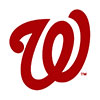 Last season, the Nationals won 98 games, owned baseball’s best record and officially arrived on the national scene. With a young core and savvy offseason moves, it was just about expected Washington would be even better.
Last season, the Nationals won 98 games, owned baseball’s best record and officially arrived on the national scene. With a young core and savvy offseason moves, it was just about expected Washington would be even better.
Unfortunately, “Natitude” hasn’t carried over as expected and the defending NL East champs find themselves in second place, but only by default in the NL East.
Halfway through the season, the Nationals are 41-40 and 14th in the NL in runs scored. Injuries to Bryce Harper and Wilson Ramos would certainly hamstring any team, but Washington also has under-performing seasons across the board.
Jayson Werth has battled injuries, newcomer, Denard Span, has been a disappointment, left field has virtually no production without Harper, Mike Morse is long gone and Adam Laroche has only recently started hitting. Unfortunately for Washington, there is no legitimate room in the lineup for improvements from the outside, so don’t look for the National to improve the offense through trade.
Harper will replace Bernadina when he returns on Monday and Ramos should take over for anemic-hitting, Kurt Suzuki, eventually. Top hitting prospect, Anthony Rendon, is the current second baseman and isn’t likely to go anywhere, nor is he part of the problem. The Nationals will have to hope the team catches firepower in the second half.
Washington’s pitching staff hasn’t been as elite as advertised. A team supposed to be competing with Atlanta for the NL’s best has been average. The Nats are sixth in the NL in ERA though are top three in BAA and WHIP, while maintaining middle-of-the-road status on longballs, implying the rotation has been a little unlucky.
Of course, Gio Gonzalez has gotten hot recently, Stephen Strasburg is healthy again and Ross Detwiler has returned from injury so Washington could get going at anytime. Dan Haren is currently hurt and not a legitimate candidate for a rotation spot at this point, leaving 24-year-old Taylor Jordan as the fifth starter, so it wouldn’t hurt the Nats to try to find at least one legitimate starting pitcher.
Additionally, the Nationals could use another reliever, one to compensate for a somewhat unimpressive campaign from Drew Storen, and a second to help dominate lefties. Washington’s struggles may seem to be with the offense, but they should concentrate on improving a mediocre bullpen and a thin rotation over the course of the next month.
Needs: Back of the rotation starter, late-inning reliever, lefty reliever.
[divide]
Sellers: Philadelphia Phillies
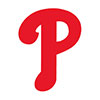 The Phillies are one of a handful of teams in need of a reality check. It’s time to sell. It’s time to rebuild. The core is old and outside of a couple of pieces, there is a lot of wasted money on the roster for a team who has no legitimate shot at competing as presently constructed. It’s unpopular to demand firesales from a team with a lot of talent on paper and Ruben Amaro hasn’t exactly made the most logical decisions recently, but the Phillies need to sell off assets and restock the farm system. The “big three” window is closed.
The Phillies are one of a handful of teams in need of a reality check. It’s time to sell. It’s time to rebuild. The core is old and outside of a couple of pieces, there is a lot of wasted money on the roster for a team who has no legitimate shot at competing as presently constructed. It’s unpopular to demand firesales from a team with a lot of talent on paper and Ruben Amaro hasn’t exactly made the most logical decisions recently, but the Phillies need to sell off assets and restock the farm system. The “big three” window is closed.
Cliff Lee is a nice asset and should be traded immediately. Cole Hamels should be the one guy the Phillies build a rotation around in the future because he is still young enough to both be an ace and put together back-to-back dominant seasons. Roy Halladay may very well never return to being the pitcher who once dominated baseball and if he does it’s unlikely to be in Philly.
And if you can come to terms with the fact, the Phillies – five games under .500, 7.5 games out of a playoff spot, competing in a division with two superior teams ahead of them, with the worst bullpen in maybe all of baseball and a rotation 10th in ERA – have a closed window, than you can come to terms with the fact they should be selling to open a new one.
Trade Lee, Papelbon, Utley, Rollins and anything else worth something. Because when you’re rebuilding, an elite closer shouldn’t be the thing to build around, nor should an aging ace, nor should a middle-of-the-lineup hitter on the wrong end of his 30’s with an injury-ridden past who is finally performing well or a declining shortstop.
Sell all three while the value is sky high. The Phillies are ninth in runs, OBP and seventh in OPS. Let’s not pretend there is any metric in the bullpen, rotation or lineup implying they should make a run.
Needs: Younger starting pitching, relief help, middle infield, right field.
[divide]
Sellers: New York Mets
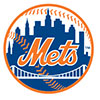 The Braves are a contender, the Nationals can become one again and the Phillies need to blow up the roster. The Mets are on their way back, but not for another two years. For as poorly run as this franchise was as recently as three years ago is as well as it’s been run the last couple of years. Now New York finds itself in a pitcher’s park with the makings of a cost-controlled, dominant rotation for years to come.
The Braves are a contender, the Nationals can become one again and the Phillies need to blow up the roster. The Mets are on their way back, but not for another two years. For as poorly run as this franchise was as recently as three years ago is as well as it’s been run the last couple of years. Now New York finds itself in a pitcher’s park with the makings of a cost-controlled, dominant rotation for years to come.
Matt Harvey is the pitching version of Mike Trout and Zack Wheeler could be equally as valuable by next year or the year after. Dillon Gee, and the injured Jon Niese are both cost-controlled and make excellent middle to back-end power pitchers. The Mets have four legitimate starters going forward, but they aren’t there as a team yet.
They need some more pieces, just not in the rotation, with a couple of more promising arms nearly major league ready. Where the Mets are still awful is in that enormous outfield of Citi Field, getting no production from anywhere. The bullpen, 14th in the NL just ahead of Philadelphia, can also use a makeover.
Soon, Johan Santana‘s salary will be gone and New York will have room to spend money again, and by 2015, this team could become a force. David Wright is the lineup’s anchor for the foreseeable future with his “Met for Life” contract he just signed. Outside of him, nothing else on offense should be untouchable.
Lucas Duda, Ike Davis, David Murphy and closer Bobby Parnell could all make useful trade chips to varying degrees, especially if all four can be healthy and effective before the trade deadline. New York could use an offense better than 12th in runs, 9th in HR, 13th in OBP and 14th in OPS, and they should have enough pieces to create one in a couple of years without having to hurt their prized rotation.
Needs: Middle infield, 1B, OF, bullpen help
[divide]
Sellers: Miami Marlins
 How much more can they sell? Here is the team furthest away from competition and yet being more honest with itself than the Phillies. Miami knows it will be awful and evil owners or not, will not pretend to be something it isn’t.
How much more can they sell? Here is the team furthest away from competition and yet being more honest with itself than the Phillies. Miami knows it will be awful and evil owners or not, will not pretend to be something it isn’t.
With John Buck, Jose Reyes, Mark Buehrle, Heath Bell, Josh Johnson, Hanley Ramirez and Omar Infante gone, the Marlins have done most of its selling, anymore of which and Giancarlo Stanton might swing owner, Jeffrey Loria, into the Atlantic Ocean.
Still, it’s certainly not a time to buy considering the Marlins don’t utilize things like a payroll.
Oddly, despite the unlikable path the Marlins have gone after fleecing its fanbase into a publically-funded station with the promise of competing and spending money, it has paid excellent early dividends for a team who could be competitive around 2016.
Stanton is still there and will be forced to be for a few more years and by then the Marlins’ grand rebuilding plan may be convincing enough to either have him sign the first Marlins’ no-trade deal in history, or be traded for another team’s entire farm system.
Marcell Ozuna hasn’t embarrassed himself and Jose Fernandez looks like the real deal. In the process of making Miami baseball unwatchable, the Marlins have revamped what almost became a floundering farm system and the prospects have been performing in year one.
Ricky Nolasco is pitching well, which is to say pitching his way out of the city, and Steve Cishek, Mike Dunn and Ryan Webb offer trade value where the Marlins like to go the cheapest; in the bullpen. Trading those three and perhaps Juan Pierre to a speed-challenged contender, along with Logan Morrison, should complete the entire rebuilding process for Miami before its wait and see approach for the next two or three years.
For now, the Marlins are dead last in: Runs, HR, OBP, OPS, 2B and RBI.
As a rotation, it’s a little more advanced, merely “mediocre” instead of “historically bad”.
Either way, if you’re going to do a job, see it through all the way.
Needs: Everything except right field.
